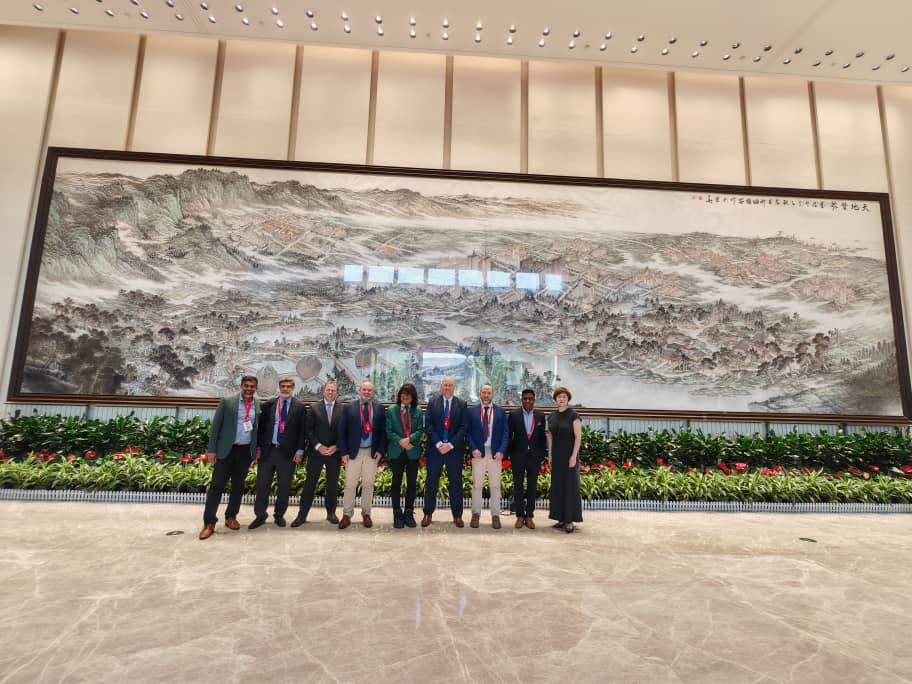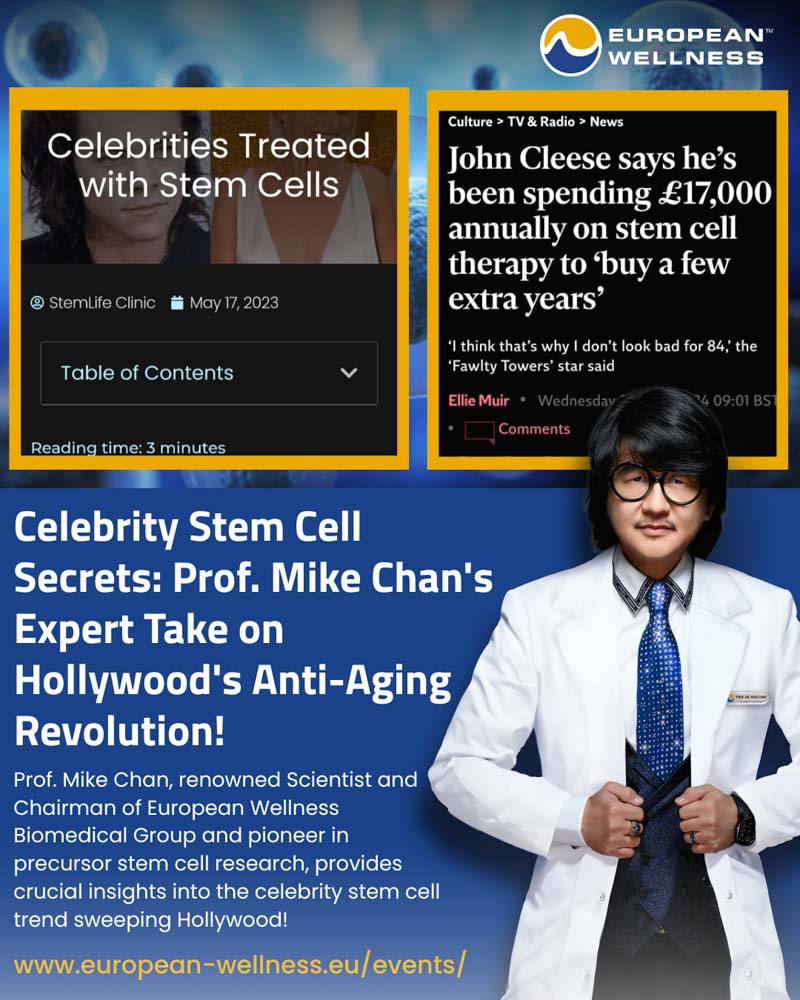Backed by data from over 40 centers worldwide, Prof. Mike Chan proves that precursor stem…

Revolutionary Biological Breakthrough in Stroke Treatment – How Prof. Mike Chan’s Research is Changing Lives Worldwide
Stroke, a sudden and devastating attack on the brain, remains one of the leading causes of death and long-term disability across the globe. For too long, the aftermath of a stroke has been a grim reality for millions, often leaving survivors with profound impairments that drastically alter their quality of life. However, a new era of hope is emerging, spearheaded by the groundbreaking work of Prof. Mike K.S. Chan PhD. In his latest book, “Understanding Stroke: The Biological Approach,” co-authored with Dina Tulina, Prof. Chan unveils a revolutionary perspective on stroke management, emphasizing biological interventions that promise not just recovery, but true restoration.
This article delves into the core insights of Prof. Chan’s study, breaking down complex medical concepts into easily understandable terms and highlighting the profound impact of his biological approach on the future of stroke treatment and rehabilitation.
The Silent Global Crisis – Understanding Stroke’s Devastating Impact on Millions
Imagine a city where the water supply suddenly shuts off to a critical neighborhood. Within moments, homes and businesses are without essential resources, leading to immediate and severe consequences. This is akin to what happens during a stroke: the brain, much like that neighborhood, is suddenly deprived of the vital blood flow that carries oxygen and nutrients. Even a few seconds of interruption can cause significant damage to brain cells, which, unlike other cells in the body, cannot store these essential components for long.
The statistics paint a stark picture of this global health crisis. According to the World Health Organization (WHO), stroke stands as the second leading cause of death worldwide [1]. Its impact extends beyond mortality, ranking as the third-leading cause of both death and disability combined. In 2020 alone, the Centers for Disease Control and Prevention (CDC) reported alarming figures for the United States: a stroke occurs every 40 seconds, and tragically, someone dies from a stroke every three and a half minutes [2]. The human cost is immense, with more than 80% of stroke survivors facing long-term disability, often struggling to cope independently. The economic burden is equally staggering, with the global cost of stroke exceeding $721 billion in 2020, representing a significant 0.66% of the entire global GDP.
Prof. Mike Chan emphasizes the urgency of understanding these figures: “The sheer scale of stroke’s impact, both in terms of lives lost and the profound disability it leaves behind, underscores the critical need for innovative approaches to treatment and prevention.” This crisis demands not only immediate medical attention but also a deeper understanding of its underlying mechanisms and, crucially, new strategies for recovery.
References
[1] World Health Organization. (2022). Global Health Estimates. Available at: https://www.who.int/data/gho/data/themes/mortality-and-global-health-estimates
[2] Centers for Disease Control and Prevention. (2020). Stroke Facts. Available at: https://www.cdc.gov/stroke/facts.htm
From Stem Cells to Recovery – The Biological Revolution in Stroke Treatment
For many years, stroke treatment primarily focused on acute intervention to restore blood flow and then managing the resulting disabilities. However, Prof. Mike Chan’s work introduces a paradigm shift, focusing on the body’s innate ability to heal and regenerate. This is where the “biological approach” comes into play, leveraging advanced therapies to repair and restore damaged brain tissue.
At the heart of this biological revolution lies stem cell therapy. Think of stem cells as the body’s highly specialized “repair crew.” Unlike other cells that have a specific job (like a heart cell or a skin cell), stem cells are like blank slates, capable of developing into various cell types, including those found in the brain. When a stroke occurs, these repair crews can be deployed to the damaged areas, helping to rebuild and reconnect neural pathways.
Prof. Chan elaborates on this groundbreaking concept:
“The brain’s remarkable ability to heal itself through biological intervention represents the most significant advancement in stroke treatment we’ve seen in decades.”
He further emphasizes the unique potential of a specific type of stem cell:
“Precursor stem cells offer stroke patients something we’ve never been able to provide before, the genuine possibility of restoring damaged brain tissue rather than simply managing the aftermath.”
The book details how these precursor stem cells, particularly fetal precursor stem cells, hold significant advantages due to their potent regenerative capabilities. Beyond stem cells, Prof. Chan’s biological approach integrates other cutting-edge modalities:
- Mito Organelles CNS Brain (MO CNS): Therapies aimed at optimizing the function of mitochondria, the powerhouses of brain cells, to enhance their recovery and resilience.
- Nano-Size Neuropeptides: Tiny, targeted molecules that can influence brain function and repair at a cellular level.
- Transcranial Direct Current Stimulation (TDCS) and Transcranial Magnetic Stimulation (TMS): Non-invasive brain stimulation techniques that use electrical currents or magnetic fields to encourage neural activity and plasticity.
- Hyperbaric Oxygen Therapy (HBOT): Involves breathing pure oxygen in a pressurized environment, which can significantly increase oxygen delivery to damaged brain tissues, promoting healing.
- Ozone Therapy: Utilizes ozone to improve oxygen utilization and reduce inflammation.
- Bio Hormonal Modulator: Aims to balance hormones that play a crucial role in brain health and recovery.
These advanced treatments, when combined, offer a multi-faceted approach to not only mitigate the immediate damage of a stroke but also to actively promote the regeneration and restoration of brain function. It’s about moving beyond mere survival to a path of genuine recovery and improved quality of life.
Hope for Recovery – New Rehabilitation Methods That Actually Work
While groundbreaking biological treatments lay the foundation for recovery, comprehensive and innovative rehabilitation is the cornerstone of truly regaining lost function after a stroke. Prof. Chan’s work emphasizes that the journey to recovery is a holistic one, integrating various therapeutic approaches to maximize patient outcomes.
Imagine learning to walk again after a long illness. It’s not just about moving your legs; it’s about retraining your brain, strengthening your muscles, and rebuilding your confidence. Similarly, stroke rehabilitation goes beyond physical exercises. The book highlights the importance of:
- Holistic Rehabilitation Programs: These programs consider the patient as a whole, addressing not only physical impairments but also cognitive, emotional, and psychological challenges. This might include speech therapy for communication difficulties, occupational therapy for daily living skills, and psychological support to cope with the emotional toll of stroke.
- Morphogenetic Harmonizer System and Scalar Plasma Wave Modulator: These advanced technologies are introduced as tools to enhance the body’s natural healing processes and improve neural communication, further supporting rehabilitation efforts.
- Comprehensive Physiotherapy: Beyond traditional exercises, the book explores specialized physiotherapy techniques tailored to stroke recovery, focusing on regaining movement, balance, and coordination.
Prof. Mike Chan’s ultimate vision for stroke patients is clear:
“When we combine cutting-edge biological therapies with comprehensive rehabilitation, we’re not just helping patients survive stroke – we’re helping them truly live again.”
This means moving beyond merely existing after a stroke to actively participating in life, pursuing passions, and enjoying independence.
For example, a stroke survivor who struggled with fine motor skills might, through dedicated therapy, regain the ability to button a shirt or write their name. Someone who lost the ability to speak might, with speech therapy and biological support, be able to hold conversations again. These are not just medical achievements; they are profound life transformations.
The book also emphasizes the critical role of psychological support, recognizing that the emotional impact of a stroke can be as debilitating as the physical one. By addressing anxiety, depression, and frustration, patients are better equipped to engage in their rehabilitation and achieve optimal results. The focus extends to home rehabilitation strategies, empowering patients and their families to continue the recovery journey in their own environment.
Prof. Chan’s research and clinical experience, which includes treating highly influential individuals, celebrities, and even heads of state, underscore the effectiveness of these integrated approaches. His work offers a beacon of hope, demonstrating that with the right biological interventions and dedicated rehabilitation, a life of quality and independence after stroke is not just a dream, but an achievable reality.
To read more about his research, click on this link: https://european-wellness.eu/product/understanding-stroke-the-biological-approach/
Follow European Wellness Academy:


